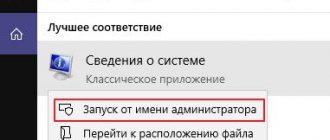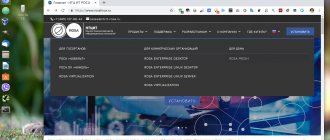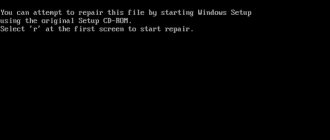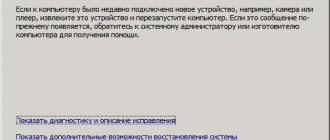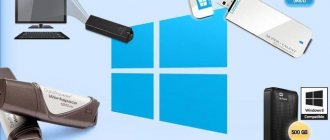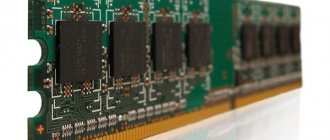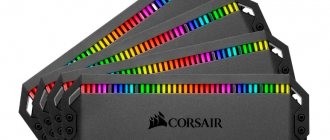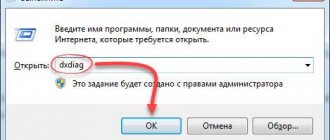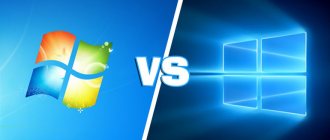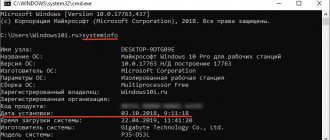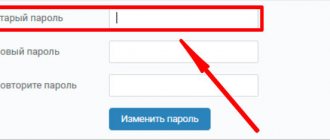The rapid development of technology is the greatest miracle of our time. Human life is becoming easier, faster and more interesting, and for this we must thank computers in any of their manifestations. They have gone through an impressive evolutionary path that has turned bulky desktop boxes into more compact and convenient laptops and smartphones. Their characteristics are constantly discussed on the Internet, but they often forget about what makes them work - operating systems. This article contains the most popular of their desktop options, clarifying their features and capabilities.
Telegram channel of the creator of Trashbox about technology
How the operating system works
An OS is a set of programs that control the operation of a computer. Main OS functions:
- Monitors CPU load
- Manages RAM, memory card or hard drive resources
- Responsible for the distribution of tasks and processes
- Updates, installs and removes applications and programs
The first popular operating system was Windows 95. Its main feature was its graphical interface. Thanks to this, the user could control the computer using the mouse cursor. Before this, you had to use special commands, which were difficult for most people to understand.
Today there are many types of operating systems. Not all of them are in high demand, but only a few of them are. For PCs, we will look at the main operating systems: Windows, Mac OS, Linux. Mobile devices include the main operating systems: Android, IOS, Windows Mobile.
Statistics of operating systems in the world:
Taking into account the aggregate statistics of desktop and mobile platforms, as of July 2020, Android OS is in the lead - 41.24% of all devices. Second and third respectively Windows - 35.24% and iOS - 13.2%.
A little history
In the 1940s, the earliest electronic digital systems did not have operating systems. Electronic systems of this time were programmed using rows of mechanical switches or via jumpers on circuit boards. These are special-purpose systems that, for example, generated ballistic tables for the military or controlled the printing of payroll checks from data on punch cards. After general-purpose programmable computers were invented, machine languages (consisting of strings of binary digits 0 and 1 on punched paper tape) were introduced to speed up the programming process.
In the early 1950s, a computer could only execute one program at a time. Each user used the computer exclusively for a limited period of time and received scheduled time with the program and data on punch cards or punched tape. The program will be downloaded to the machine and the machine will run until the program completes. Typically programs can be debugged from the front panel using toggle switches and panel lamps.
Later machines came with libraries of programs that would be linked to a user program to assist with operations such as input and output, and generating computer code from human-readable symbolic code. This was the genesis of the modern operating system. However, the machines still performed one task at a time. At the University of Cambridge in England, the work order was once a washing line (clothing line) from which ribbons were hung with different colored pins to indicate work priorities.
An improvement was the Atlas Supervisor, introduced with the Manchester Atlas, introduced in 1962, "considered by many to be the first recognizable modern operating system"
Macos
MacOS (formerly "Mac OS X" and later "OS X") is a line of open-kernel graphical operating systems developed, marketed and marketed by Apple Inc., the latter of which comes pre-loaded on all Macintosh computers currently shipping. MacOS has been Apple's main operating system since 1984. It is a UNIX operating system built on technology developed at NeXT in the second half of the 1980s until Apple bought the company in early 1997. The operating system was first released in 1999 as Mac OS X Server 1.0, and in March 2001 as a client version (Mac OS X v10.0 "Cheetah"). Since then, there have been six more different "client" and "server" editions of macOS until they were combined into OS X 10.7 "Lion".
Before its merger with macOS, the server version—macOS Server—was architecturally identical to its desktop counterpart and typically ran on Apple's line of Macintosh hardware. macOS Server included workgroup management and administration tools that provide simplified access to key network services, including Mail Transfer Agent, Samba Server, LDAP Server, Domain Name Server, and others. With Mac OS X v10.7 Lion, all server aspects of Mac OS X Server were integrated into the client version, and the product was renamed "OS X" (dropping the "Mac" from the name). Server tools are now offered as an app.
Linux
Ubuntu , a desktop Linux distribution. The Linux kernel began life in 1991 as a project by Linus Torvalds, then a university student in Finland. He posted information about his project on a newsgroup for computer students and programmers and received support and help from volunteers who were able to create a complete and functional kernel.
Linux is Unix-like, but was developed without any Unix code, unlike BSD and its variants. Because of its open-license model, the Linux kernel code is open to study and modification, which has led to its use on a wide range of computing devices from supercomputers to smartwatches. Although estimates suggest that Linux is used on only 1.82% of all "desktop" (or laptop) PCs, it is widely used for use on servers and embedded systems such as cell phones. Linux has replaced Unix on many platforms and is used on most supercomputers, including the top 385. Many of the same computers are also on Green500 (but in different orders), and Linux runs on top 10. Linux is also widely used on other small, energy-efficient computers, such as smartphones. The Linux kernel is used in some popular distributions such as Red Hat, Debian, Ubuntu, Linux Mint and Google's Android, Chrome OS and Chromium OS.
Microsoft Windows
Microsoft Windows is a family of proprietary operating systems developed by the Microsoft Corporation and designed primarily for computers based on Intel architecture, with a total usage of 88.9% on Internet-connected computers.
Microsoft Windows was first released in 1985 as an operating environment running on top of MS-DOS, which was the standard operating system shipped on most Intel personal computers at the time. In 1995, Windows 95 was released, which only used MS-DOS as the boot system. For backward compatibility, Win9x can run real-time MS-DOS and 16-bit Windows 3.x drivers. Windows ME, released in 2000, was the last version of the Win9x family. Later versions were based on the Windows NT kernel. Current Windows client versions run on IA-32, x86-64, and 32-bit ARM microprocessors. Additionally, Itanium is still supported on the older version of Windows Server 2008 R2. In the past, Windows NT supported additional architectures.
Server editions of Windows are widely used. Microsoft has spent significant capital in recent years to promote the use of Windows as a server operating system. However, the use of Windows on servers is not as widespread as on personal computers because Windows competes with Linux and BSD for server market share.
ReactOS is an alternative Windows operating system that is developed on Windows principles - without using any Microsoft code.
Other
There have been many operating systems that were significant in their time but are no longer there, such as AmigaOS; OS/2 from IBM and Microsoft; Classic Mac OS, the non-Unix predecessor to Apple's MacOS; BeOS; XTS-300; RISCOS; MorphOS; Haiku; BareMetal and FreeMint. Some of them are still used in niche markets and continue to develop as minority platforms for enthusiast communities and specialized applications. OpenVMS, formerly from DEC, is still actively developed by Hewlett-Packard. However, other operating systems are used almost exclusively in academia, for teaching about operating systems, or for researching operating system concepts. A typical example of a system that performs both roles is MINIX, while, for example, Singularity is used exclusively for research.
Other operating systems failed to gain significant market share, but introduced innovations that influenced major operating systems.
Update: The most popular operating systems in the world 2020
Microsoft Windows
It was created in the mid-1980s. Today it is the most popular operating system in the world. The percentage of users is 90%. Windows is installed in one of three ways:
- Home
- Professional
- Ultimate.
The most successful versions of Windows OS:
- Windows 10 (2015)
- Windows 8 (2012)
- Windows 7 (2009)
- Windows Vista (2007)
- Windows XP (2001).
Windows is criticized for excessive use of computer resources, unstable operation and constant annoying updates. However, the advantages of this OS outweigh the disadvantages.
Advantages
- Reliable support for video, audio cards, printers, etc.;
- Intuitive interface and easy-to-learn OS;
- Easy installation of programs and applications;
- A huge selection of programs, games, antiviruses, video editors, photo editors, text editors;
- Ease of use;
Flaws
- The need for constant updates to ensure security;
- Not the most reliable protection against viruses that can erase all data or stop the system from working;
- Long OS loading time;
Important: the secret to the popularity of Windows lies in the simple process of mastering the OS by the most ordinary users in just a couple of hours.
Windows
- Windows 10 or Windows Server 2016 - Open the Start , type About Computer . In the Settings find the line Edition , in which your version and edition of Windows is written below.
- For Windows 8.1 or Windows Server 2012 R2, move your mouse to the bottom right corner of the screen, then up, click Settings , and then click Change PC settings . Click Computer and devices and select Computer information . In the Windows , check the version and edition of Windows operating system installed on your computer.
- Windows 8 or Windows Server 2012 - Open the Start , type Computer, press and hold or right-click Computer, and then select Properties. In the Windows , find your version and edition of Windows.
- Windows 7 and Windows Server 2008 R2 - Click Start , right-click Computer , select Properties. In the About Windows , check the version and edition of Windows operating system installed on your computer.
- Windows Vista and Windows Server 2008 - Click Start , Select Control Panel -> System and Maintenance -> System.
For all of the above options, you can try clicking the Start , then entering the WINVER winver.exe from the search results .
- Windows XP and Windows Server 2003 - Click Start -> Run , type WINVER , and then click OK. You can also try entering msinfo32 or sysdm.cpl as additional options. Finally, you can try typing DXDIAG . At the same time, Windows may prompt you to check your drivers; click No.
- Windows 95/98/ME - Click Start -> Settings -> Control Panel . Next, double-click System and select the General tab. Find the version number under the system title. To more accurately determine the version of Windows installed, follow the link.
- Windows CE - Click Start -> Settings -> Control Panel , select the System applet. If it doesn't work, look at the system version on the General .
Using exactly the same methods, you can find out the bitness of the Windows operating system: 32-bit or 64-bit.
Apple MacOS
A line of operating systems created by Apple. This is the standard system for Mac computers. As of 2014, the percentage of users was between 9 and 10%.
Important: one of the main reasons for the lack of popularity of Mac OS is the high prices of Apple computers.
The last of all versions was Mac OS X. Its predecessors were:
- Yosemite (2014)
- Mavericks (2013)
- Mountain Lion (2012)
- Lion (2011)
- Show Leopard (2009).
Apple Mac OS systems have similarities to Linux, but differ in that Mac OS is closed source and paid for. Like any other OS, it also has its positive and negative sides:
Advantages
- The closed system increases the performance of programs;
- Efficient interaction with memory and other processes
- Reliability in use;
- Virus resistance;
Flaws
- Paid basis;
- Installs only on Apple computers;
- Has a narrow range of uses (intended more for work);
- Limited number of available games based on Apple Mac OS;
Main types of OS
Using a PC at home, you don’t even think about what OS it is. And you need to know this information at least, because if you suddenly want to install any program, you will have to choose exactly the one that will be compatible with your system.
Let's start with a short review of the three most popular operating systems.
Windows
The most popular is Microsoft Windows, released by Microsoft Corporation, and the Windows system itself means windows.
Currently, several versions are supported by the manufacturer:
- Windows 7 Service Pack 1 – will be serviced until January 14, 2020
- Windows 8.1 – will be serviced until January 10, 2023
- Windows 10 – Since 2020, retailers have been providing computers with this version pre-installed
But don't be alarmed by those who currently have versions 7 and 8.1 installed. Termination of service does not mean that they will stop working for you, the corporation will simply stop releasing updates for them. I know people who still work with Windows XP, although updates for it began to be released back in 2014.
The operating system is located on the hard drive, in most cases this is the “Local Disk C” section, where during installation the following folders are created:
- Windows – the OS itself with all the settings is located.
- Program Files – here are folders with programs installed on the PC.
- Users – the folder where user profiles are stored
- PerfLogs – stores system performance reporting files
Attention, I strongly recommend that you do not make any changes in the first two folders, as this can damage the OS files or installed programs. As a result, the PC or installed program may stop working.
Now let's take a closer look at how to find out your version of Windows.
1. On the desktop we find the “Computer” or “This PC” icon
If you don’t have this icon, we can bring it to your desktop in a few clicks.
To do this, right-click on a free area of the desktop and select personalization from the menu that opens.
In the window that opens for Windows 7 and 8, look for the item “Change desktop icons”
For Windows 10, the item will be called “Themes” and already on the right side of the open window we look for and click on “Desktop icon settings”
In the window that appears (it is almost the same for all Windows), put a checkmark next to the inscription “computer” and press the “ok” button. That's it, my computer icon on the desktop.
2. Place the mouse cursor over the computer icon, right-click and select “properties” from the menu that opens.
In the window that opens, we carefully examine the information about the system that is installed on your PC.
I have Windows 10 Pro. In addition, there is information about the processor, the amount of RAM, the type of system, as well as the activation of my Windows.
And so we’ve sorted out Windows, now let’s move on to analyzing the remaining systems.
Apple Mac OS X
Mac Os has been specially produced by Apple (translated from English as apple) since 1984 for Macintosh computers, abbreviated as “Mac”.
Since this OS is installed only on Apple products and these devices are expensive, Windows is more popular among users because it can run on any computer.
In order to see what version of Mac Os is installed, you need to move the mouse cursor to the upper left corner over the Apple button or the “apple” icon and left-click. In the menu that opens, select “About This Mac”
Linux
The great thing about Linux is that it is an open source OS that can be modified by any user, due to this there are now many versions of this OS, each with its own look and feel.
Here are the three most popular versions (distributions) of Linux:
- Ubuntu
- Fedora
- Mint
There are several advantages of Linux:
- It's free
- All programs are installed in one place
- You can forget about malware, since viruses are written mainly for Windows.
If you have Linux installed but you don’t know which distribution you are using, you should enter the following commands in the console:
- cat /etc/*release
- cat /etc/*version
- cat /etc/issue
Linux
Unlike Mac OS, Linux is open source. This allows the OS to be modified and distributed throughout the world. For example, Windows can be distributed exclusively by Microsoft. The operating system was named after its creator Linus Torvalds. The foundation for Linux was laid in 1991. Its main versions:
- Ubuntu
- Mint
- Fedora.
Each version has its own graphic design. As of 2014, Linux user statistics reach about 2%. Most servers run on Linux due to its flexibility and ease of configuration. It consists of packages, and the main heart is the kernel with installed driver support.
Advantages
- Free use;
- Windows programs and games run on Linux using an emulator;
- Ability to write your own programs if you have knowledge of programming languages;
- Free software;
- High level of reliability and safety;
Flaws
- Limited number of games and programs with Linux support;
- Limited hardware support;
- Low availability of advice in case of problems with programs or drivers;
- Difficult to learn;
Important: one of the main factors in the low popularity of Linux is the difficulty of mastering the interface and operating principle of the OS for ordinary PC users.
In search of a domestic OS
The Ministry of Telecom and Mass Communications maintains the Unified Register of Russian programs for electronic computers and databases. In the Operating Systems category, it offers 47 titles. Most of them are designed for government agencies and corporate tasks, but there are several options for home use.
Exclusive rights to programs presented in the Unified Register belong to citizens of the Russian Federation or companies controlled by citizens of the Russian Federation, and payments to foreign companies, if any, do not exceed 30% of revenue. But it would be a stretch to call most of them Russian - the operating systems, with few exceptions, are based on Linux.
The Linux kernel can be used without restrictions thanks to a free license, but in fact this will not be development, but modification. The main components of the systems are also not developed on the territory of the Russian Federation by domestic specialists, but are only borrowed and adapted for the next assembly.
There are several systems developed in Russia from scratch, but they are not widely used. One of the most famous projects is ReactOS. This is a free and open source operating system, which, according to the developers, should be fully compatible with Windows applications and drivers. 20 years after the start of development, ReactOS is in the alpha testing stage and is not installed on computers without dancing with a tambourine.
Another well-known domestic OS, developed without using any third-party code, is called “Phantom”. Its main feature is persistence. This is a kind of hibernation mode, which is characterized by the fact that even if the work is completed, the data is not lost. The next time you start the machine, the system continues to work from the place where it was at the time of shutdown.
The main problem of Phantom is the lack of application software. The OS is being developed by Digital Zone, which does not have the funds to create programs. It turns out to be a vicious circle: while there are no programs, there is no distribution of the system; Without distributing the system, no one wants to write programs for it. It was also not possible to download the distribution. On the official website, the level of readiness is designated as proof of concept - “workable code, but stability and completeness are insufficient for industrial use.”
As a result, after a long search, we tried only two systems: ROSA Fresh and Astra Linux Common Edition. The rest are either not available for download or belong to the corporate segment. Theoretically, you can also download Calculate Linux Desktop for your home computer, but in terms of the composition of pre-installed applications, this assembly is more suitable for solving office tasks. We want not only to work, but also to have fun.
Alternative PC Operating Systems
In addition to the main OS, there are many other options for installing operating systems. Each of them has its own differences and purpose.
- FreeDOS
- FreeBSD
- eComStation
- ReactOS
- Oracle Solaris
- Syllable Desktop
- Haiku
- SkyOS
- TempleOS
- ChromeOS
Important: we have presented only a list of operating systems; you can familiarize yourself with the characteristics and features of each of them yourself.
It is worth noting among the presented list ChromeOS, which is now popular in the field of education. It is free, works on weak computers, and does not require special resources or knowledge to set it up.
Android
Google released the first Android OS called “Astro” in 2008. Over time, new versions were released, after which the growth in popularity of this OS did not stop. Today it is the most common operating system. Google Play Market is the official application store. Most programs on mobile devices are supported by Android. Almost all brands of phones, except Apple, run on this OS.
Inferno
Infernal OS began its existence in 1995 as a research project at Bell Labs, the French research division of Alcatel-Lucent, formerly owned by AT&T (American Telephone & Telegraph Company). The creators of Inferno had learned well the lessons of Bell's previous operating system research, jokingly called "Bell Labs Plan 9." The systems resulting from both studies easily allow users to leverage computing resources distributed across multiple computers on a network.
Inferno is strikingly different from Plan 9, having on board a virtual machine that provides the ability to run the system's user interface and its applications on most hardware platforms, including x86, ARM, PowerPC and SPARC. Inferno can be downloaded completely free of charge from the official website of the project.
Apple iOS
Apple iOS was introduced in 2007 with the release of the first iPhone. Until today, Apple iOS only works on Apple products. The system is constantly updated and improved.
Unlike Android, Apple focuses not on design, but on performance. This is proven by the reliable operation of iPhones and their long lifespan. Even now you can find an iPhone 3G that is in excellent functional condition.
Windows Mobile
Windows Mobile is typical mainly for Nokia and Microsoft phones. There were some attempts by Samsung and HTC to release multiple versions based on Windows, but they were unsuccessful. In general, the OS has its positive aspects, but its popularity does not extend beyond Nokia and Microsoft users. Now new Nokia models are coming out with Android support.
Which OS should you choose?
In order to decide on the choice of computer operating system, you need to proceed from three parameters:
- Simplicity
- Studying
- Work tool.
For ease of use, nice pictures and ease of installing programs, Windows is the best choice. Linux will be an excellent tool for those who like to study all the processes of a computer. There is no better OS for work than Mac OS. Many programmers, video editors, and sound specialists use MacBook Pro based on Mac OS.
With smartphones everything is easier. If you have an iPhone, you are limited in your choice of OS. Almost all modern phones are available on Android. Windows Mobile is the rarest representative among mobile gadgets.
Important: for a detailed overview of various operating systems, instructions and settings, please follow the link: https://geekon.media/operacionnye-sistemy-instrukcii-i-nastrojki/
